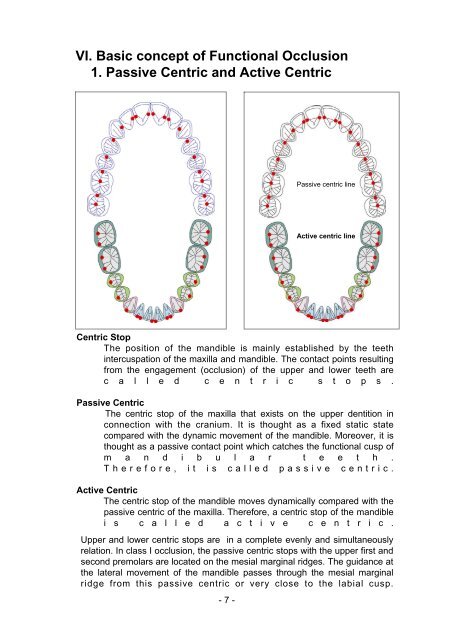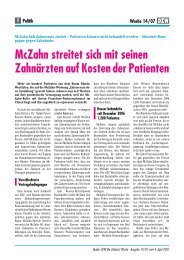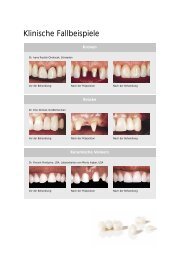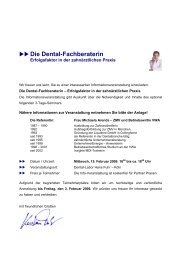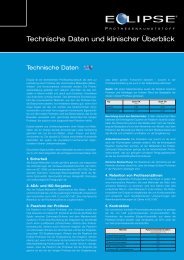Atlas occlusion diagnosis by bruxchecker
Atlas occlusion diagnosis by bruxchecker
Atlas occlusion diagnosis by bruxchecker
You also want an ePaper? Increase the reach of your titles
YUMPU automatically turns print PDFs into web optimized ePapers that Google loves.
VI. Basic concept of Functional Occlusion<br />
1. Passive Centric and Active Centric<br />
Passive centric line<br />
Active centric line<br />
Centric Stop<br />
The position of the mandible is mainly established <strong>by</strong> the teeth<br />
intercuspation of the maxilla and mandible. The contact points resulting<br />
from the engagement (<strong>occlusion</strong>) of the upper and lower teeth are<br />
c a l l e d c e n t r i c s t o p s .<br />
Passive Centric<br />
The centric stop of the maxilla that exists on the upper dentition in<br />
connection with the cranium. It is thought as a fixed static state<br />
compared with the dynamic movement of the mandible. Moreover, it is<br />
thought as a passive contact point which catches the functional cusp of<br />
m a n d i b u l a r t e e t h .<br />
Therefore, it is called passive centric.<br />
Active Centric<br />
The centric stop of the mandible moves dynamically compared with the<br />
passive centric of the maxilla. Therefore, a centric stop of the mandible<br />
i s c a l l e d a c t i v e c e n t r i c .<br />
Upper and lower centric stops are in a complete evenly and simultaneously<br />
relation. In class I <strong>occlusion</strong>, the passive centric stops with the upper first and<br />
second premolars are located on the mesial marginal ridges. The guidance at<br />
the lateral movement of the mandible passes through the mesial marginal<br />
ridge from this passive centric or very close to the labial cusp.<br />
-7 -


